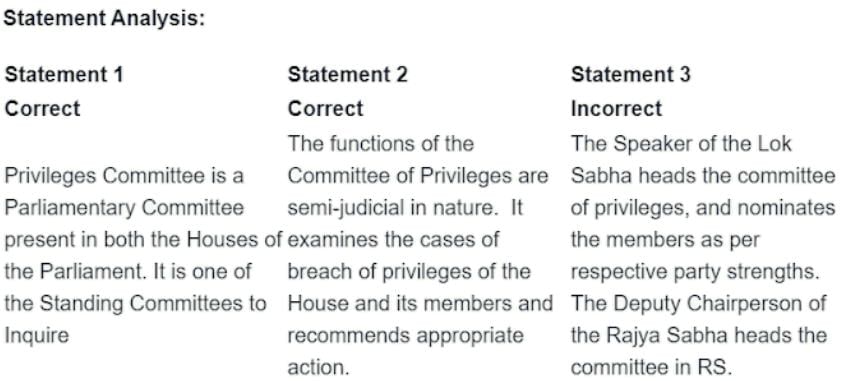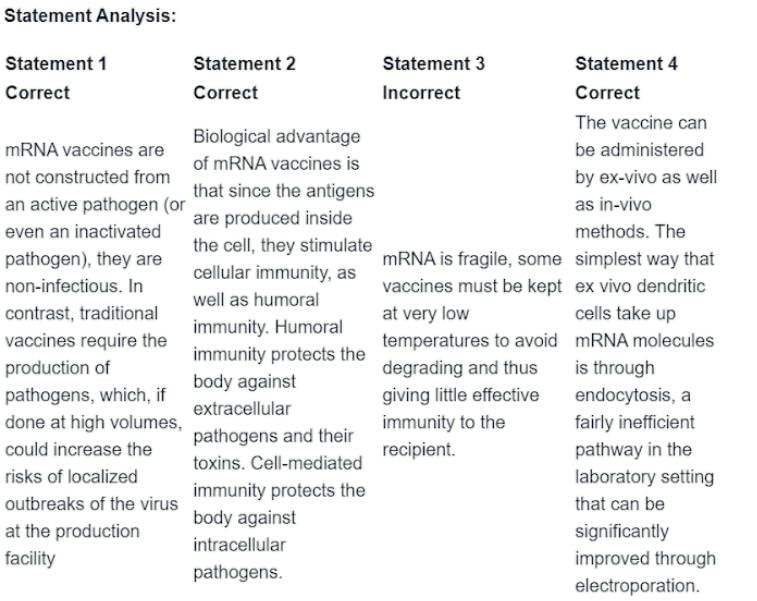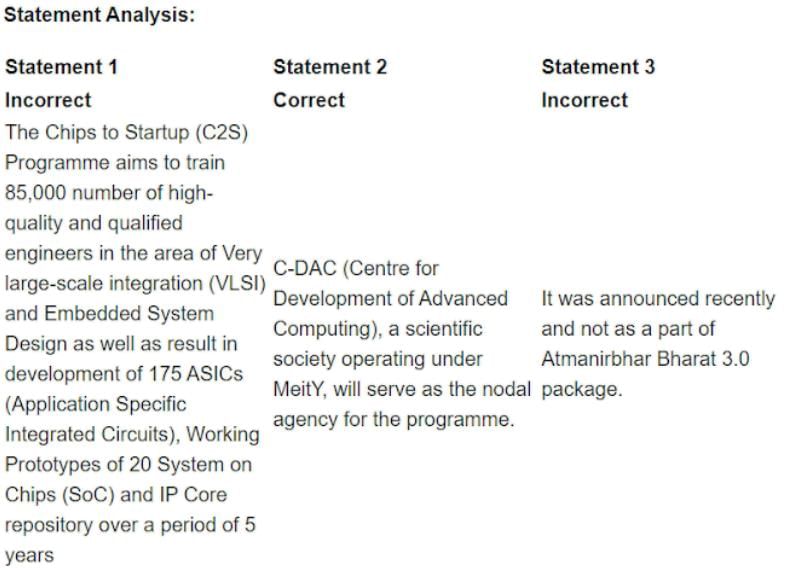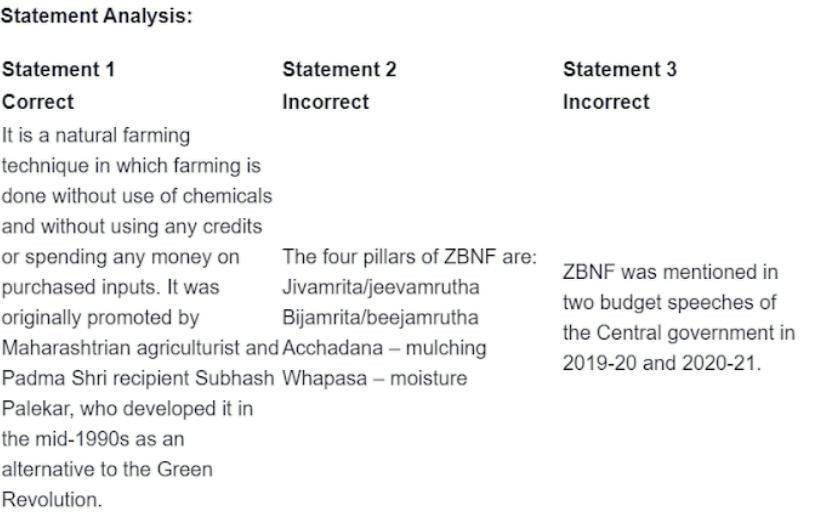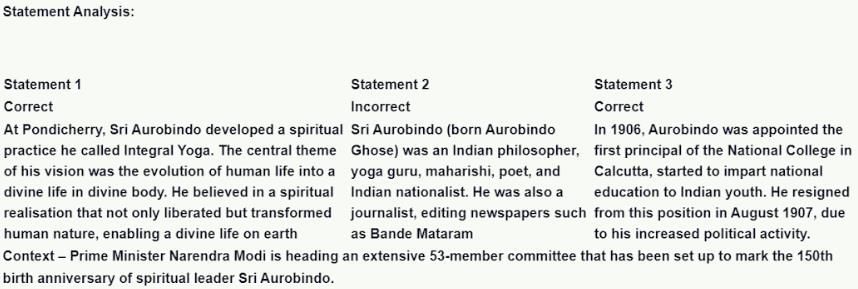UPSC CSE Prelims Paper 1 Practice Test - 30 - UPSC MCQ
30 Questions MCQ Test - UPSC CSE Prelims Paper 1 Practice Test - 30
Consider the following statements regarding ‘Committee on Privileges’
1. It is a Parliamentary Committee present in both the Houses of the Parliament
2. The functions of the Committee of Privileges are semi-judicial in nature
3. The Chairperson of the Rajya Sabha heads the committee in Rajya Sabha.
Choose the correct answer using the code given below
‘SAMARTH’, a scheme recently seen in news is related to
Consider the following statements regarding ‘mRNA vaccines’
1. These vaccines are non-infectious.
2. They provide cellular immunity as well as humoral immunity.
3. They are stable over a vast range of temperature.
4. The vaccine can be administered both by ex-vivo and in-vivo methods
Choose the correct statements
Consider the following statements with respect to ‘Chip to Start up Programme’?
1. The Programme aims to nurture at least 20 domestic companies involved in semiconductor design and facilitating them to achieve turnover of more than ₹1500 Crore in the next 5 years.
2. C-DAC (Centre for Development of Advanced Computing) is going to serve as the nodal agency for this programme
3. It was announced as part of Atmanirbhar Bharat 3.0
Which of the following statement(s) given above is/are correct
‘Hyderabad Declaration’ seen in news recently is related to
Consider the following statements regarding ‘Biodivercities by 2030’
1. It aims to support city governments, businesses and citizens, to enable cities to live in harmony with nature by 2030
2. It is released by World Economic Forum in collaboration with United Nations Development Programme
3. The programme employs Artificial Intelligence to address challenges related to nature and cities
Choose the correct answer using the code given below
With reference to Zero Budget Natural Farming, consider the following statements
1. It is a natural farming technique in which farming is done without use of chemicals or spending any money on purchased inputs
2. There are five pillars under this natural farming method
3. It was first announced in union budget in 2016.
Choose the correct statement(s)
Consider the following statements regarding ‘Developing Country’ status at World Trade Organization
1. There are no WTO definitions of “developed” or “developing” countries.
2. About half of the WTO’s members are developing countries.
3. The Committee on Trade and Development is the main body focusing on developing countries
4. Both GATT and the General Agreement on Trade in Services (GATS) allow developing countries some preferential treatment.
Select the correct answer using the code given below
Consider the following statements with respect to ‘India State of Forests Report 2021’
1. Arunachal Pradesh has the largest forest cover as a percentage of their total geographical area
2. Soil Organic Carbon (SOC) represents the largest pool of carbon stock in forests
3. Madhya Pradesh has the highest bamboo bearing area in the country
Choose the correct answer using the code given below
‘Operation Sard Hawa’ conducted by Border Security Force is related to
‘SMILE’, a scheme which is seen in news is related to
With reference to Asian Infrastructure Investment Bank (AIIB), consider the following statements
1. AIIB has more than 100 members but none of them from North America
2. China is the largest share-holder and also has the highest voting powers.
3. English, Arabic and Chinese are the official languages
Choose the correct statements
Consider the following statements regarding ‘Aurobindo Ghose’
1. He developed a spiritual practice he called Integral Yoga
2. He was a journalist who edited newspapers such as ‘Kaal’
3. He was appointed the first principal of the National College in Calcutta, started to impart national education to Indian youth
Which of the following statement(s) given above is/are correct ?
Emergency Use Listing’ is used in the context of
Consider the following statements
1. Ken river and Betwa river are tributaries of Ganga
2. Ken river passes through Panna National Park
3. Ken Gharial Sanctuary was established for the conservation of Mugger and Gharial crocodiles
Which of the statements given above is/are correct?
Consider the following statements with respect to Bharatiya Prakritik Krishi Paddhati Programme (BPKP):
1. BPKP is promoted under centrally sponsored scheme- Paramparagat Krishi Vikas Yojana (PKVY)
2. The scheme mainly emphasises on exclusion of all synthetic chemical inputs and promotes on-farm biomass recycling
3. Telangana is the first state to take up natural farming under BPKP programme
Which of the following statements is/are correct?
‘Mikania’,’Lantana’,’Thrips’ which was seen in news recently are
Consider the following statements regarding ‘Atal Ranking of Institutions on Innovation Achievements (ARIIA)’
1. It ranks all major higher educational institutions and universities in India
2. It is an initiative of NITI Aayog
3. It ranks institutions based on indicators related to research and development amongst students and faculties
Select the correct answer using the code give below
‘1988 sanctions list’ is used in the context of
Which of the following best describes thetechnology called Selective CatalyticReduction (SCR)?
With reference to Black Carbon, consider the following statements:
1. It is a gaseous substance that results from the incomplete combustion of fossil fuels and biomass.
2. It remains in the atmosphere for a shorter period of time and contributes to climate change.
3. It lowers the albedo of Earth’s surface that causes temperature rise.
Q. Which of the statements given above is/are correct?
Consider the following statements regarding Sea Snot :
1. It refers to waste material released by whales during mass migration.
2. It is highly beneficial to marine ecosystem.
Q. Which of the statements given above is/are correct?
Consider the following statements with reference to Chemical Oxygen Demand (COD):
1. It represents the amount of oxygen required by microorganisms to break down the organic matter present in water at a specified temperature.
2. COD measurements are used as an indicator of the size of a wastewater treatment plant required for a specific
location.
Q. Which of the statements given above is/are correct?
Consider the following statements regarding Arsenic pollution:
1. Arsenic has no smell or taste.
2. Arsenic is a carcinogenic agent.
3. Arsenic is the most common heavy metal pollutant found in India's rivers.
Q. Which of the statements given above is/are correct?
In the context of the environment, ‘Carbon Pricing’ is best described as
An innovative Bubble Curtain Technologywas deployed in the Yamuna river to:
With reference to the Blue Carbon Ecosystem, consider the following statements:
1. The carbon sequestering capacity of a coastal blue carbon ecosystem is more than those of tropical forests.
2. The Blue Carbon Initiative for securing the Blue Carbon Ecosystem is an initiative of Conservation International.
Q. Which of the statements given above is/are correct?
With reference to the fluoride ion concentration in drinking water, consider the following statements:
1. Soluble fluoride ions in drinking water make the enamel on teeth much harder.
2. The optimum level of fluoride in drinking water is up to 1 ppm.
3. Methemoglobinemia disease is caused by the excess of fluoride ions in drinking water.
Which of the statements given above are correct?
Which of the following best describes the'Virtual water'?


